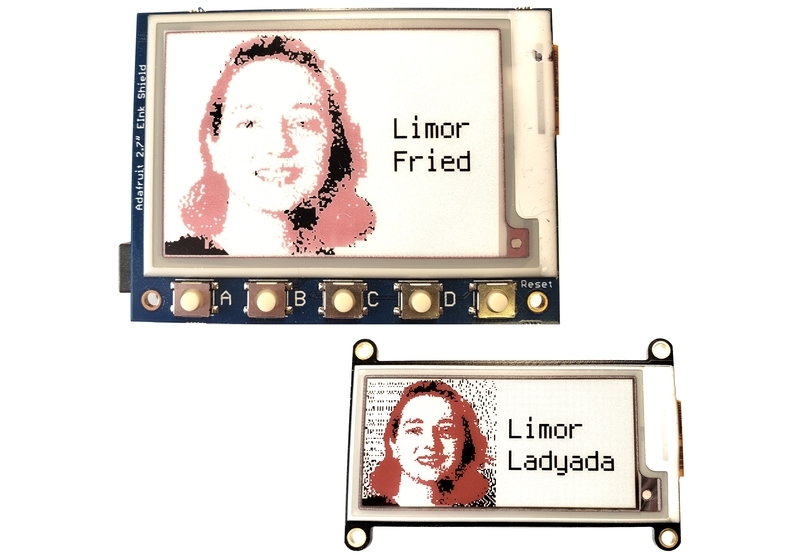This guide is intended to get you using the Adafruit 2.13" tri-color e-ink FeatherWing and 2.7" tri-color e-ink shield quickly with CircuitPython.
These displays come with headers already soldered on - male headers for the shield version and female headers for the Feather version. This allows them to be plugged in to their respective microcontrollers without soldering. Place on the microcontroller, upload your code and graphics file, and display!
Refresh Times
Most LCD, OLED, and LED displays can be written to quite fast which helps to do moving graphics and colors easily.
For eInk displays, this is not the case. Erasing an image involves sending special signals to the display to "undo" the colored pixels from displaying. Adafruit recommends to not refresh these displays more often than every 180 seconds (3 minutes).
If they are written to more quickly, the display may be damaged. A damaged display may have pixels permanently on or off or other anomalies and voids the warranty. If you want to know more about time between refreshes, see the datasheet on the display you are using here and here.
eInk displays continue to display an image, even with the power off. If you want a fairly static image, say a picture or a name badge, eInk is wonderful.
If you want a crisp, rarely changing display, eInk is great. For fast changing information, please consider a different class of display like TFT or OLED.

Metro Form Factor









































